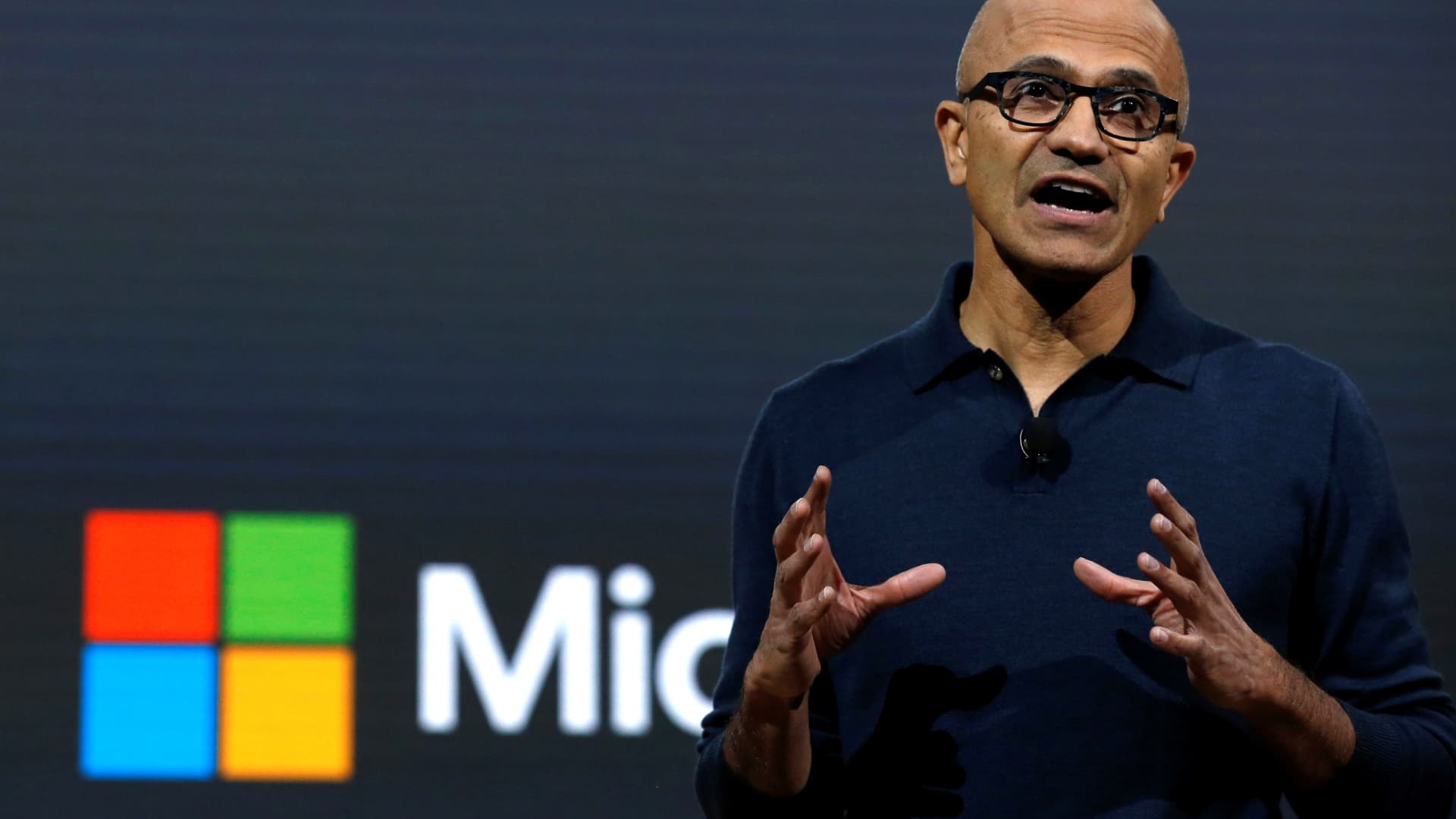Microsoft Chief Executive Officer (CEO) Satya Narayana Nadella speaks at a live Microsoft event in the Manhattan borough of New York City, October 26, 2016.
Lucas Jackson | Reuters
Microsoft‘s Build developer conference kicks off on Tuesday, giving the company the opportunity to showcase its latest artificial intelligence projects, following high-profile events this month hosted by OpenAI and Google.
One area where Microsoft has a distinct advantage over others in the AI race is in its ownership of Windows, which gives the company a massive PC userbase.
Microsoft CEO Satya Nadella said in January that 2024 will mark the year when AI will become the “first-class part of every PC.”
The company already offers its Copilot chatbot assistant in the Bing search engine and, for a fee, in Office productivity software. Now, PC users will get to hear more about how AI will be embedded in Windows and what they can do with it on new AI PCs.
Build comes days after Google I/O, where the search giant unveiled its most powerful AI model yet and showed how its Gemini AI will work on computers and phones. Prior to Google’s event, OpenAI announced its new GPT-4o model. Microsoft is OpenAI’s lead investor, and its Copilot technology is based on OpenAI’s models..
For Microsoft, the challenge is twofold: keeping a prominent position in AI and bolstering PC sales, which have been in the doldrums for the past two years following an upgrade cycle during the pandemic.
In a recent note on Dell to investors, Morgan Stanley analyst Erik Woodring wrote that he remains “bullish on the PC market recovery” due to commentary from customers and recent “upward revisions to notebook” original design manufacturer (ODM) builds.
Technology industry researcher Gartner estimated that PC shipments increased 0.9% in the quarter after a multi-year slump. Demand for PCs was “slightly better than expected,” Microsoft CFO Amy Hood said on the company’s quarterly earnings call last month.

New AI tools from Microsoft could offer another reason for enterprise and consumer customers to upgrade their aging computers, whether they’re made by HP, Dell or Lenovo.
“While Copilot for Windows does not directly drive monetization it should, we believe, drive up usage of Windows, stickiness of Windows, customers to higher priced more powerful PCs (and therefore more revenue to Microsoft per device), and likely search revenue,” Bernstein analysts wrote in a note to investors on April 26, the day after Microsoft reported earnings.
While Microsoft will provide the software to handle some of the AI tasks sent to the internet, its computers will be powered by chips from AMD, Intel and Qualcomm for offline AI jobs. That could include, for example, using your voice to ask Copilot to summarize a transcription without a connection.
What’s an AI PC?
The key hardware addition to an AI PC is what’s called a neural processing unit. NPUs go beyond the capabilities of traditional central processing units (CPUs) and are designed to specifically handle artificial intelligence tasks. Traditionally, they’ve been used by companies like Apple to improve photos and videos or for speech recognition.
Microsoft hasn’t said what AI PCs will be capable of yet without an internet connection. But Google’s PIxel 8 Pro phone, which doesn’t have a full computer processor, can summarize and transcribe recordings, recommend text message responses and more using its Gemini Nano AI.
Computers with Intel’s latest Lunar Lake chips with a dedicated NPU are expected to arrive in late 2024. Qualcomm’s Snapdragon X Elite chip with an NPU will be available in the middle of this year, while AMD’s latest Ryzen Pro is expected sometime during the quarter.
Intel says the chips allow for things like “real-time language translation, automation inferencing, and enhanced gaming environments.”
Apple has been using NPUs for years and recently highlighted them in its new M4 chip for the iPad Pro. The M4 chip is expected to launch in the next round of Macs sometime this year.
Windows on Arm
Qualcomm, unlike Intel and AMD, offers chips powered by Arm-based architecture. One of Microsoft’s sessions will talk about “the Next Generation of Windows on Arm,” which will likely cover how Windows runs on Qualcomm chips and how that’s different from Intel and AMD versions of Windows.
Intel still controls 78% of the PC chip market, followed by AMD at 13%, according to recent data from Canalys.
In the past, Qualcomm has promoted Snapdragon Arm-based computers by touting their longer battery life, thinner designs and other benefits like cellular connections. But earlier versions of Qualcomm’s chips were limited in what they offered consumers. In 2018, for example, the company’s Snapdragon 835 chip couldn’t run most Windows applications.Â
Microsoft has since improved Windows to handle traditional apps on Arm, but questions remain. The company even has an FAQ page dedicated to computers running on ARM hardware.Â
AI everywhere else
Microsoft will also be hosting sessions like “AI Everywhere” covering how to “accelerate generative AI models” on devices that run in the cloud.Â
An “Azure AI Studio” session will look at how developers can create their own Copilot chatbots, which may be similar to what Google and OpenAI are doing with Gemini and ChatGPT. Imagine, for example, a company creating a chatbot that can help employees select health benefits.









